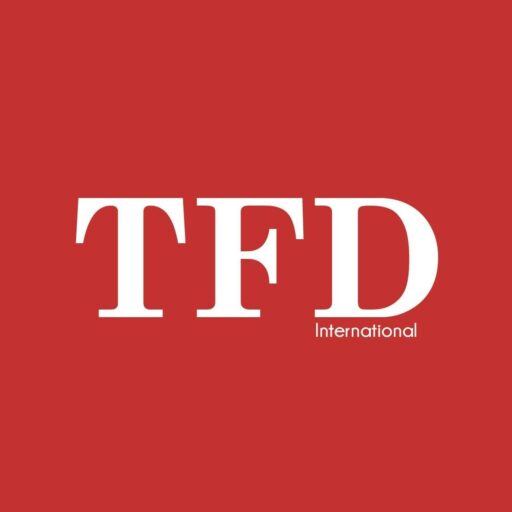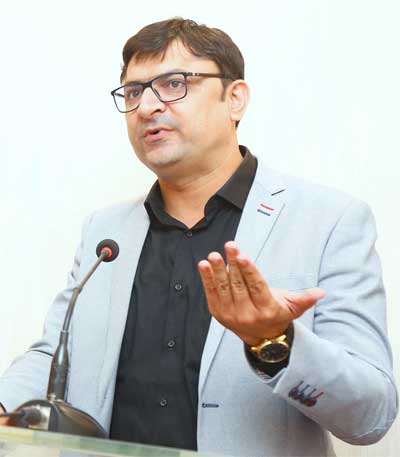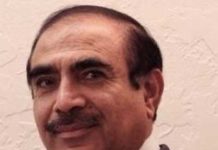Khurram Jaffrani
KARACHI: As global investors jostle between geopolitics and growth, Pakistan is making a compelling case: it’s open for business – reformed, stabilised, and sharply focused on attracting foreign direct investment, particularly from the United States. Federal Finance Minister Muhammad Aurangzeb’s recent charm offensive in Washington, during the IMF and World Bank Spring Meetings, marked a pragmatic and ambitious shift in Islamabad’s international economic diplomacy.
At the heart of Aurangzeb’s discussions with American stakeholders lies a delicate issue: the 29% reciprocal tariffs imposed under former President Donald Trump’s era. Though these levies are temporarily on hold until July, Pakistan isn’t waiting for a favourable twist. Instead, it’s negotiating head-on, aiming to dilute barriers and reposition itself as a viable trade partner within a protectionist US framework.
Pakistan’s approach isn’t about confrontation. “We will constructively engage,” Aurangzeb remarked in a Bloomberg interview, signalling Islamabad’s willingness to remove non-tariff hurdles for US products in reciprocity. A formal trade delegation is expected to visit Washington soon to flesh out a roadmap for sustainable trade enhancement.
Mining, markets and a $200 million Panda
In a bold move to diversify economic levers, Aurangzeb unveiled Pakistan’s intention to float its first-ever Panda bond – a Renminbi-denominated sovereign issue on China’s domestic capital markets. Slated for launch in the final quarter of 2025, this $200-$250 million bond is poised to unlock untapped Asian capital for Pakistan’s green and SDG-aligned projects.
But the pitch in Washington wasn’t only to China-watchers. Aurangzeb spotlighted Pakistan’s recently liberalise dminerals and mining sector, inviting American giants to invest in a resource-rich sector previously underexploited. The US is reportedly eyeing Pakistan’s mining potential – especially rare earth elements and copper – at a time when global supply chains are shifting away from Chinese dependence.
At home, Aurangzeb’s ministry is racing to embed long-overdue structural reforms. From broadening the tax base to AI-powered audits, a full-spectrum modernisation of the Federal Board of Revenue (FBR) is underway. The agriculture, real estate, and retail sectors – long under-taxed – are now in the crosshairs for greater fiscal compliance. A digitalisation push is also bringing provinces into the tax net, especially through new legislation on Agriculture Income Tax.
This reformist zeal isn’t confined to fiscal affairs. Pakistan’s approach to public finance is evolving under a National Fiscal Pact, wherein federal and provincial governments commit to rationalised spending and disciplined revenue sharing. The result? Macroeconomic stability, which no longer hangs by the thread of donor bailouts, but is slowly shifting towards structural resilience.
That confidence is resonating beyond Islamabad. Fitch’s recent credit rating upgrade for Pakistan is more than symbolic – it’s a functional greenlight for Islamabad’s return to the global financial markets. Aurangzeb assured investors that both Panda and ESG bonds are part of a calculated comeback, backed by strong fiscal indicators: falling inflation, stabilised reserves, and a manageable current account.
Further validation came from Moody’s, whose commercial team received a detailed briefing on Pakistan’s reformed fiscal ecosystem, including projections that remain upbeat due to multilateral support. At the World Bank, the endorsement came via the recently finalised10-year Country Partnership Framework (CPF), which aligns with Pakistan’s national climate, population, and infrastructure priorities.
Aurangzeb’s bilateral agenda also included constructive conversations with the Saudi Fund for Development (SFD). Pakistan is now pushing for expedited disbursement under the Saudi Oil Facility and increased investment in road infrastructure, particularly the N-25 highway. These engagements underscore a growing G2G and B2B appetite from Gulf countries, Hungary, and others keen to anchor themselves in Pakistan’s reform-powered economy.
Remittance flows, too, remain strong, adding an essential cushion to the macro picture. This, combined with high-level interest from UAE-based investors, reflects a growing consensus: Pakistan’s economy may be on the cusp of long-awaited breakout growth.
The US remains Pakistan’s largest export market, accounting for over $5 billion in annual shipments. Imports from the US, meanwhile, total around $2.1 billion. Despite that deficit, Islamabad isn’t pleading for preferential treatment – it’s crafting a modern trade strategy grounded in mutual gain.
Key to this engagement is the strategic recalibration of bilateral trade mechanisms. Islamabad is ready to smooth regulatory wrinkles, even if it means accommodating US firms with easier market access and aligned standards. The goal is clear: convert decades of transactional ties into long-term economic partnerships.
Pakistan’s ability to anchor this vision rests not just on diplomatic goodwill but on concrete signals of economic health. The IMF’s nod, the World Bank’s funding, Fitch’s confidence, and the Panda bond initiative coalesce into a singular message: Pakistan is stable, reforming, and ready for business.
From Atlantic Council panels to closed-door meetings with institutional investors, Aurangzeb painted a forward-looking picture of Pakistan’s economic trajectory. The days of cyclical crises, IMF overdependence, and erratic policymaking may be fading. In their place: tax reform, capital market expansion, energy sector liberalisation, and private-sector-led growth.
The upcoming months will be critical. As Trump-era tariffs potentially return and global capital turns selective, Pakistan’s bet on pragmatic engagement, clean governance, and fiscal discipline may well be its strongest card.
Whether it’s copper mines in Balochistan, green Panda bonds in Beijing, or textile exports to Boston, the stakes are high – but so is the ambition.





